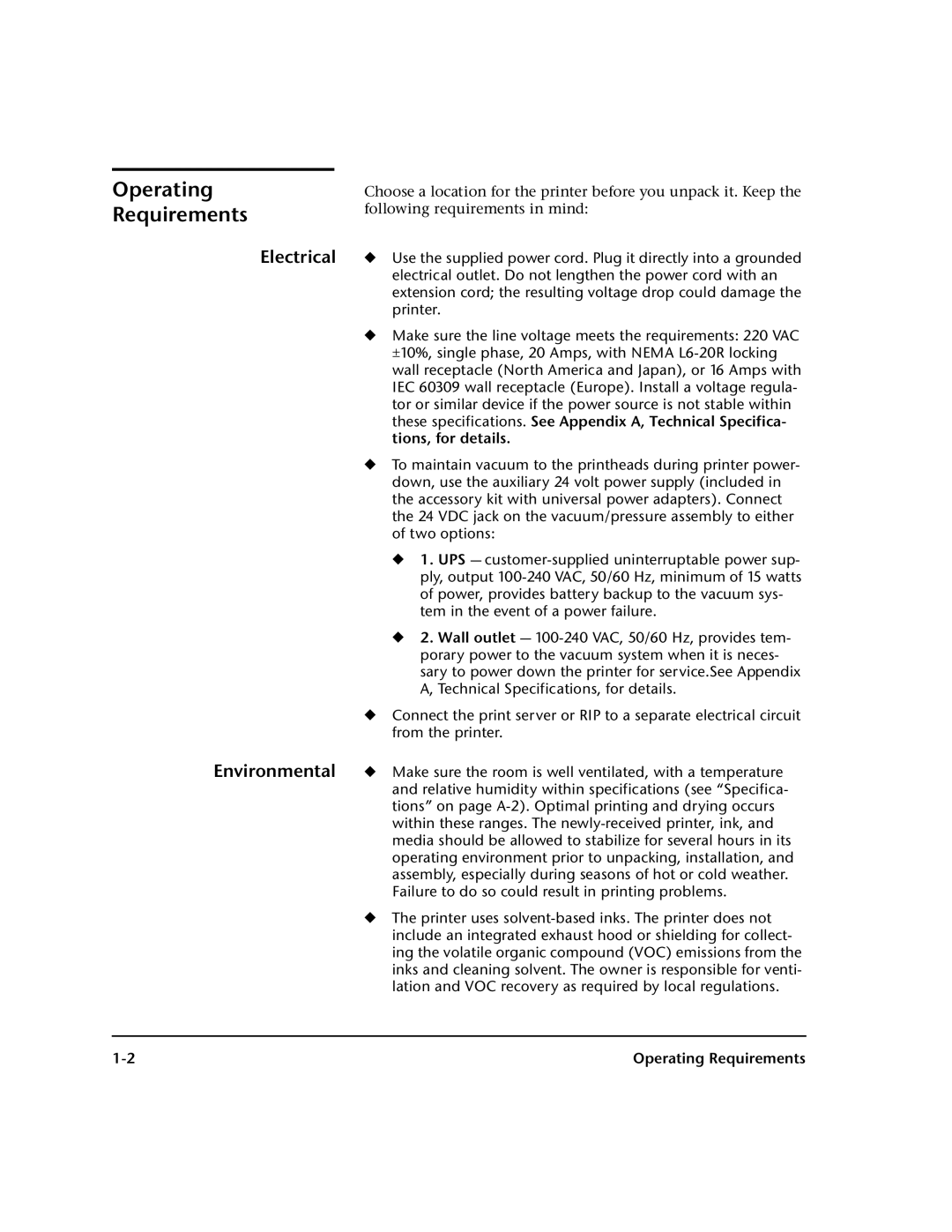Choose a location for the printer before you unpack it. Keep the following requirements in mind:
◆Use the supplied power cord. Plug it directly into a grounded electrical outlet. Do not lengthen the power cord with an extension cord; the resulting voltage drop could damage the printer.
◆Make sure the line voltage meets the requirements: 220 VAC ±10%, single phase, 20 Amps, with NEMA L6-20R locking wall receptacle (North America and Japan), or 16 Amps with IEC 60309 wall receptacle (Europe). Install a voltage regula- tor or similar device if the power source is not stable within these specifications. See Appendix A, Technical Specifica- tions, for details.
◆To maintain vacuum to the printheads during printer power- down, use the auxiliary 24 volt power supply (included in the accessory kit with universal power adapters). Connect the 24 VDC jack on the vacuum/pressure assembly to either of two options:
◆1. UPS — customer-supplied uninterruptable power sup- ply, output 100-240 VAC, 50/60 Hz, minimum of 15 watts of power, provides battery backup to the vacuum sys- tem in the event of a power failure.
◆2. Wall outlet — 100-240 VAC, 50/60 Hz, provides tem- porary power to the vacuum system when it is neces- sary to power down the printer for service.See Appendix A, Technical Specifications, for details.
◆Connect the print server or RIP to a separate electrical circuit from the printer.
◆Make sure the room is well ventilated, with a temperature and relative humidity within specifications (see “Specifica- tions” on page A-2). Optimal printing and drying occurs within these ranges. The newly-received printer, ink, and media should be allowed to stabilize for several hours in its operating environment prior to unpacking, installation, and assembly, especially during seasons of hot or cold weather. Failure to do so could result in printing problems.
◆The printer uses solvent-based inks. The printer does not include an integrated exhaust hood or shielding for collect- ing the volatile organic compound (VOC) emissions from the inks and cleaning solvent. The owner is responsible for venti- lation and VOC recovery as required by local regulations.

